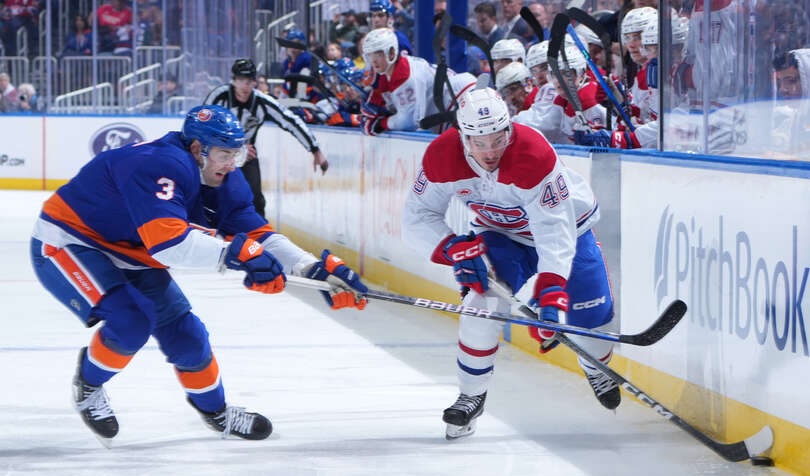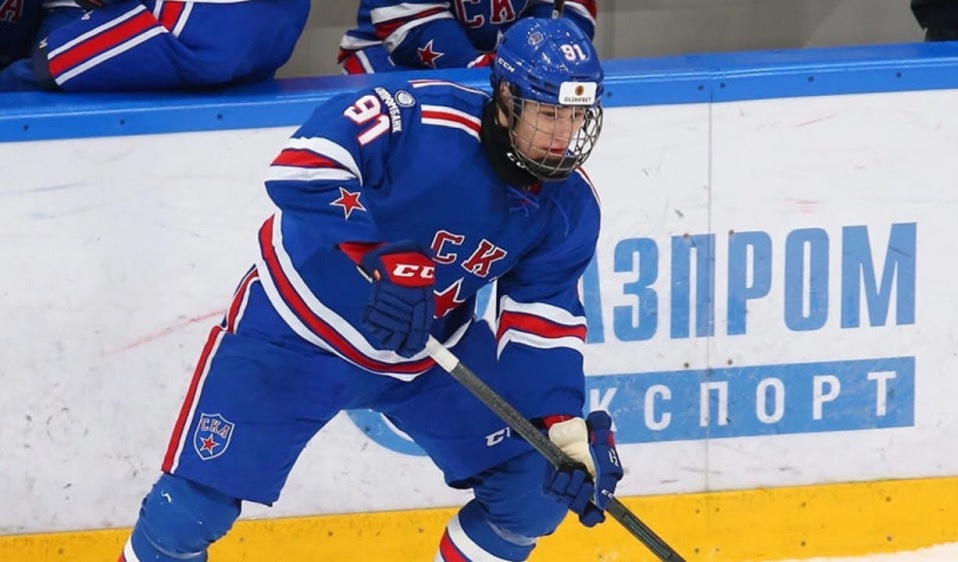HabsWorld.net --
Over the past few days, there have been plenty of tidbits that have come out regarding the details of the soon-to-be-ratified new CBA. Although we don’t know all of the new rules yet, it can safely be said that this is a much more detailed and complex system when it comes to some of the cap issues. Here is an overview of some of the new rules in effect and how they may affect the Habs.
As none of these changes have been made official yet, some of the details and interpretations may be subject to change.
Salary Cap
For this season, teams will be able to spend up to $70.2 million (full-season salaries) which means that no teams should be in cap trouble this year. For 2013-14, the cap will be $64.3 million. After that, the cap ceiling (and floor) will be calculated as 15% past the midpoint, to a maximum gap of $14 million and a minimum gap of $8 million. Previously, it was a flat $8 million. The NHLPA also has a 5% escalator that they can (and will) use on the midpoint. That all said, the cap can go no lower than $64.3 million throughout the course of the CBA. If revenues drop to a point where $64.3 million isn’t in the 50% range of HRR, additional escrow will be withheld from the players. A 7.5% bonus cushion will also be in effect in each year.
Cap Benefit Recapture
This was something that the NHLPA kept bringing up in negotiations. It applies to players with ‘back-diving’ contracts that are 7 years or longer. Although most people immediately think of Roberto Luongo, it also technically applies to Scott Gomez. Here is the general formula for this calculation:
Sum of salary paid out on the contract
Less: Sum of cap hit on the contract
Equals: Cap benefit
For players like Luongo, Ilya Kovalchuk, Marian Hossa, etc, the potential future cap hits are quite astounding, not only to the teams that signed them but also for a team acquiring them. For Gomez, it’s not quite as bad but a cap charge would still exist. However, this would only apply if he were to be dealt this season as by next year, the total cap hit will exceed the total salary paid. For illustrative purposes, this is what the potential cap charge would be if he were to be dealt before January 19th:
Sum of salary paid out on the contract (3 years): $23,500,000
Less: Sum of cap hit on the contract (3 years): $22,071,428
Equals: Cap benefit of $1,428,572
If Scott Gomez were to retire following this shortened season (something I highly doubt as I’m sure some team would give him a 1 year cheap contract but if he did), the Habs would have a cap charge in 2013-14 of $1,428,572.
Amnesty Buyouts
Speaking of Gomez and buyouts, I’m sure that pretty much everyone by now knows that two of these will be permitted in the new CBA. However, they can’t be used this year. These ‘compliance buyouts’ will be available to teams only after the 2012-13 and 2013-14 seasons. Bought out players will be paid 2/3 of their salary over two times the remaining years of the contract which is the formula from the last CBA. These players also cannot be re-acquired under any circumstance in the season following their buyout.
Of course, the key thing is with these, there is no cap hit. Expect the Habs to use at least one, if not both of these after this year.
Minimum Salary
Beginning next season, minimum salaries will rise every second year up to 2021-22 (if the CBA isn’t opted out of by then). It remains at $525,000 this season. All players on entry level contracts and veterans signing for the minimum salary will receive the following:
2013-14/2014-15: $550,000
2015-16/2016-17: $575,000
2017-18/2018-19: $650,000
2019-20/2020-21: $700,000
2021-22 and beyond: $750,000
Contract Burying
In the past CBA, we saw a few teams willing to ‘bury’ their bad contracts in the minors or in Europe, freeing up cap space to acquire other players while the sent-away players still received their full salaries (without escrow being withheld so technically, they made more than they would have in the NHL).
That option is no longer available although teams still will receive a smidgen of relief. The new formula is that anyone making $375,000 above the minimum salary is exempt from counting against the cap. For players making more than that, their cap hits will be reduced by $375,000 plus the minimum salary. For example, let’s say the Habs want to bury Tomas Kaberle in the minors for the next two seasons and not release him with a compliance buyout. His cap hit for those two years would be:
2012-13: $3.35 million ($4.25 million – [$375,000 + $525,000])
2013-14: $3.325 million ($4.25 million – [$375,000 + $550,000])
Having the $900,000 plus cap exemption will likely create a larger, more expensive market for long-term AHL veterans who aren’t likely to see much NHL action. Instead of top salaries being in the range of $350,000, they will probably be much higher. Also worth noting here is that re-entry waivers have been eliminated.
European Draft Pick Retention
Let’s get away from the numbers for a minute. In the old CBA, teams had the rights to European draftees whose countries were part of the transfer agreement with the NHL for two seasons. (Russia isn’t part of the agreement and prospects’ rights are held indefinitely.) That has been extended to four years in the new CBA but does not apply to players already selected (such as Sebastian Collberg, Magnus Nygren, Erik Nystrom, and Daniel Pribyl).
Junior Aged Players
In the past, 18 and 19 year old players were allowed to play as many as nine NHL games without losing a year off their NHL contracts. This is commonly referred to on this site as the ‘slide rule.’ For the 2012-13 season only, the threshold has been reduced. Players (like Alex Galchenyuk) can play up to five games without burning a year off their contract. After this season, it goes back to nine games.
Salary/Cap Hit Trade Retention
This was something that Brian Burke had wanted for years (and now that it’s there, he doesn’t get to use it…). Teams will be allowed to retain some of the salary and cap hit of a player to help facilitate trades. However, the following restrictions are in place:
– A team can only do this with three players at any given time;
– The team can retain up to a maximum of 50% of a players’ salary and cap hit;
– The total money retained by a team can be no greater than 15% of the cap that season;
– A contract with salary/cap hit retained can only be traded twice.
The Habs don’t have many players with salary variability which means I don’t have too many good examples to use. However, let’s assume that the Habs trade Brandon Prust and retain 20% of his contract. This would result in the following cap charges and salary payouts:
| Team | Year | Cap Hit | Salary Paid |
| Montreal (20%) |
2013-14 | $500,000 | $600,000 |
| 2014-15 | $500,000 | $500,000 | |
| 2015-16 | $500,000 | $500,000 | |
| 2016-17 | $500,000 | $400,000 | |
| New Team (80%) |
2013-14 | $2,000,000 | $2,400,000 |
| 2014-15 | $2,000,000 | $2,000,000 | |
| 2015-16 | $2,000,000 | $2,000,000 | |
| 2016-17 | $2,000,000 | $1,600,000 |
Tagging
(This particular issue is still lacking some specifics from the new deal so this is a hypothetical situation until more information is available.)
The tagging rules were something a lot of teams didn’t have to pay attention to in the last CBA although it popped up from time to time. Given that the Habs have the most committed money to next season already, Marc Bergevin and company will need to be mindful of them now. The tagging rule is in place to prevent teams from making moves that put that team over the cap for the next season. Space is calculated from taking the projected cap number and reducing it by the dollar value of contracts committed the following year.
In terms of one-way deals, Montreal has just a tad under $59 million in place already, excluding the likes of Galchenyuk and Louis Leblanc who are two-way pacts. This is where the situation becomes a bit of a hypothetical for now. Normally, teams cannot exceed the current years’ salary cap in the tagging rules. (For example, if the cap is $60 M, a contract can’t be signed that would push a team to $61 M for the next season.) If that were the case, teams would be allowed to commit to $70.2 M in cap obligations for next year. However, with the cap fixed at $64.3 M for 2013-14, that would really change things if the tagging rules came into play at that amount.
I’m sure a lot of you are wondering why this matters. P.K. Subban is why. Subban wants a long-term deal and if the tagging rules are used once a team gets to $64.3 M in cap commitments for next year, it doesn’t leave a whole lot of wiggle room to fit him in on a long-term, higher money contract. We all know that barring injury Gomez will be bought out after the year, creating ample space for this, but that doesn’t matter to the league – the contract is there now and he’s signed through next season. If the league is going to kibosh any moves that put a team over $64.3 million, this will all but force the Habs to sign Subban to a short-term deal, likely as short as one year. (If it’s okay to spend to $70.2 M, then this is a non-issue but as of yet, details about which will be the threshold are not yet available.)
With tagging in effect at $64.3 million, this would also hinder the Habs’ ability to acquire other players as Subban’s deal would take them to the limit. Fortunately, new in this CBA is a 10% allowance that comes into effect after March 1st. As the trade deadline is likely to be in early April this season, that would allow some time to add some help later in the year.
Front-Loaded Contract Variability
For those of you who would prefer the Habs try to front-load deals (something previous management regimes have for the most part shied away from), there are new restrictions in place. Contracts that see the sum of the salary/signing bonuses exceed the sum of the cap hit over the first half of the deal are subject to these variability rules:
– Year-to-year salary variability cannot exceed 35% (plus or minus) of the first year salary,
– The salary earned in the cheapest year cannot be less than half of what the most expensive year is.
Let’s assume Subban gets his long-term deal, 6 years, and the Canadiens try to front-load it. They’re aiming for a cap hit of $5.5 million and the first year salary is $8 million. This means the year-to-year fluctuation (up or down) can be no greater than $2.8 million (35% of $8 million) and the
minimum salary in any year of the contract is $4 million. A hypothetical breakdown that would meet the above criteria is as follows: 8, 6.5, 5.5, 4.5, 4.5, 4.
Obviously, these are not all of the key changes in the new CBA but hopefully this should provide a bit of an overview of some of the bigger ones and how they affect the Habs. As new information becomes available, I will try to update the examples/interpretations where applicable; if anyone has links to information that contradicts anything listed above, please e-mail me with the links.

